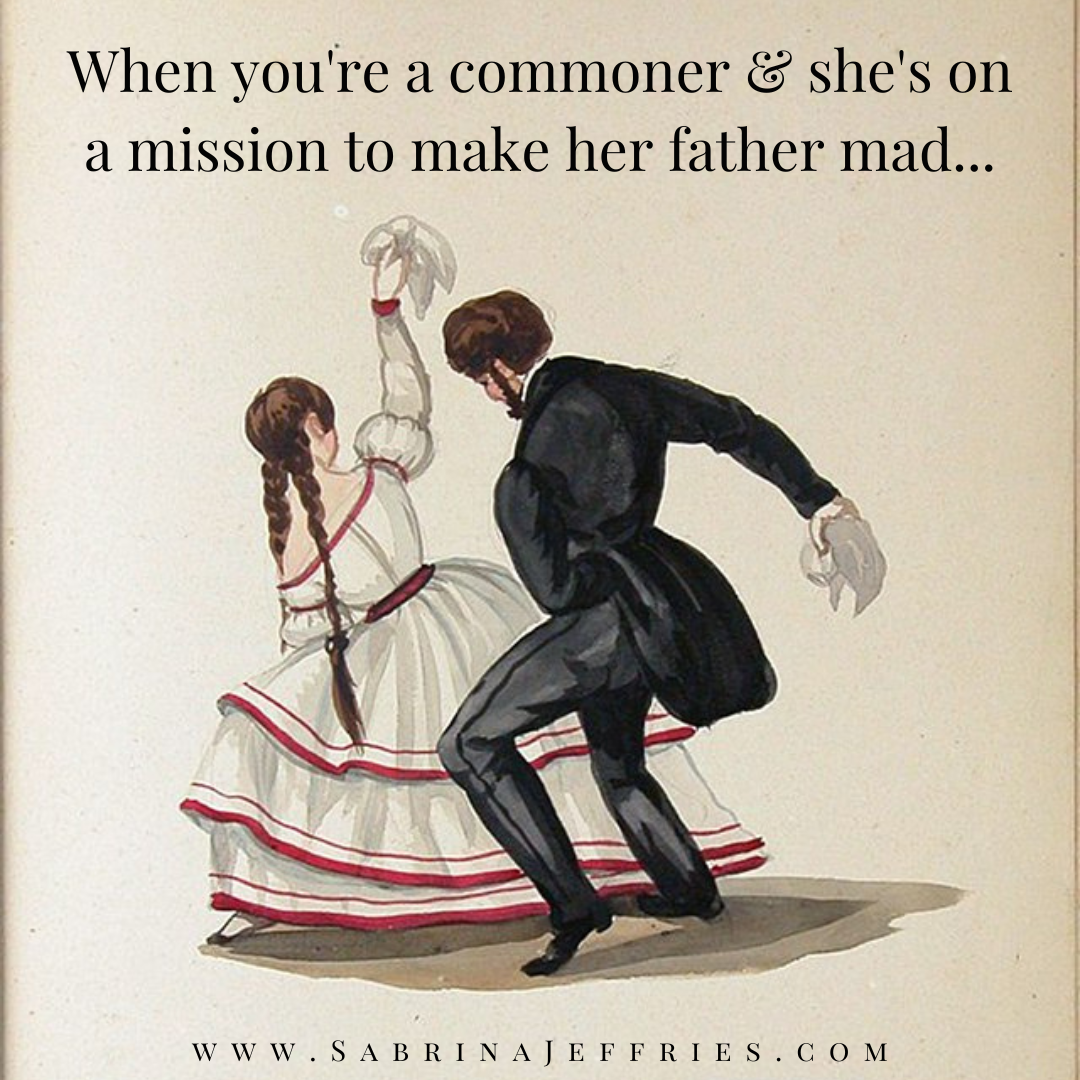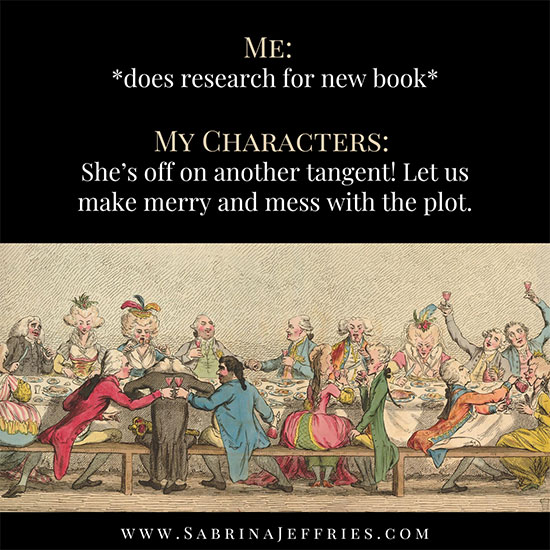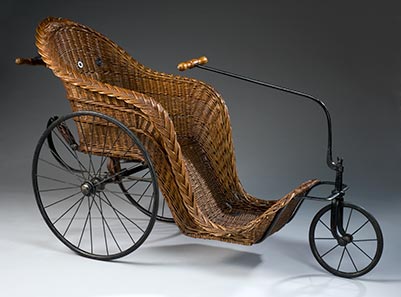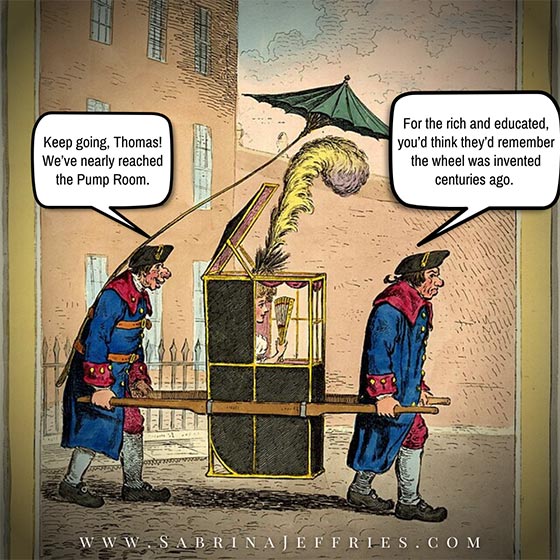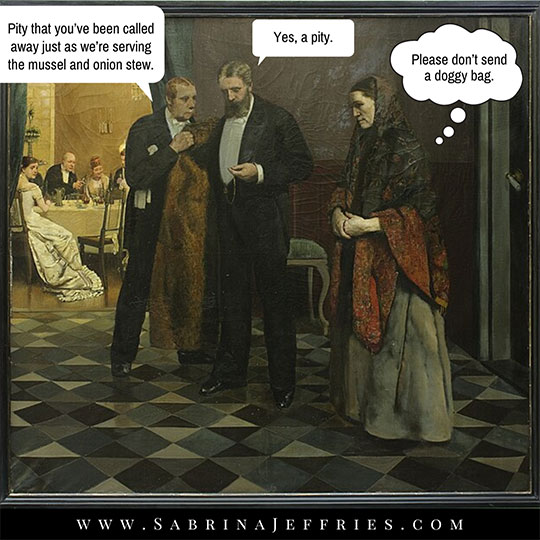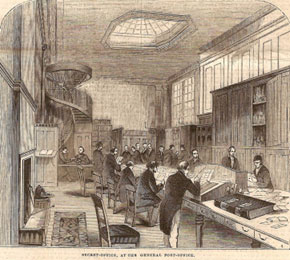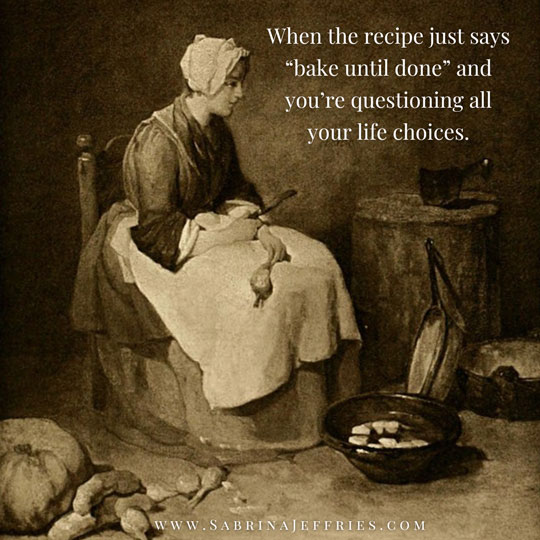Bobbing for Apples
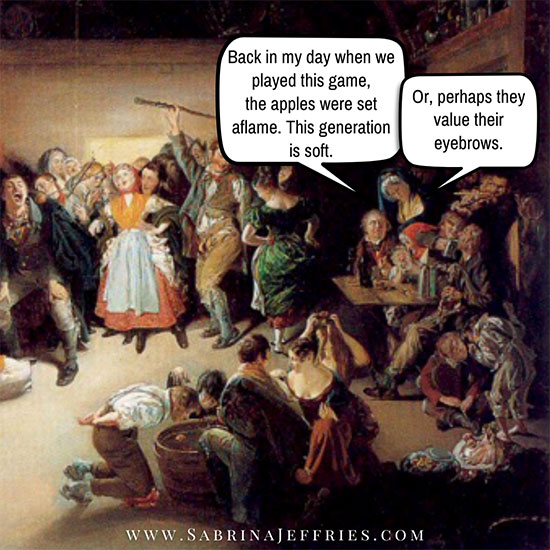
When I think of autumn and the Regency, I think of harvest fairs and harvest balls, brisk October winds, and lots of apples. But did you know that bobbing for apples was another of those romantic games where future romance was predicted? I didn’t, until I read this entertaining and thorough article about the origins of Halloween. Apparently, one variation was played the same way as it is now, except that names were carved into the apples so that whichever name was on the apple you seized was that of your future true love. Fortunately, the variation called “Snap-apple,” where a player had to seize the apple while it swung around on a pole with a burning candle at the other end of the pole, died out, or we’d not be enjoying trying to grab those apples quite so much!


